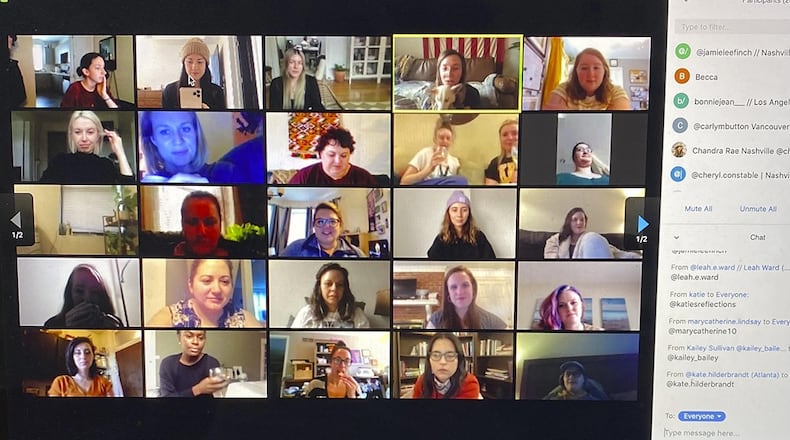In a guest column today, Matthew Boedy, an assistant professor of rhetoric and composition at the University of North Georgia, puzzles over why the University System of Georgia is telling professors they can’t offer their students an option to take an on-site course online -- even if students want to do so.
Boedy is conference president of the Georgia chapter of the American Association of University Professors, a national organization that represents the interests of college and university faculty members.
By Matthew Boedy
At the end of my last guest column for the AJC Get Schooled blog, I mentioned I am offering the opportunity to all my students registered for an in-person course to take my class fully online.
Why did I do this? As I noted in an email to my students, I am worried for all of us, especially as we navigate the halls, bathrooms, and classrooms.
I also agree with Boston University professor Daniel Star who wrote in InsideHigherEd that student desire for in-person classes will shift “substantially once students experience socially distanced, mask-to-mask classes….”
A well-designed, interactive online course may indeed be better than the “hybrid” course students will face at my university.
For example, due to needed social distancing of students into groups and my own desire to be away from campus as much as possible, the number of days a student will see me in-person, in a classroom this semester is five. That is out of a 45-day, 15-week Monday-Wednesday-Friday schedule.
Credit: UNG
Credit: UNG
So far eight students have taken my offer. Colleagues at my school and around the state are doing the same.
We all are doing this because we know students are concerned.
Some want the dorm life and the “campus experience,” but others do not. It’s hard to say how many are in each group. But as cases rise on campus, the online group will grow.
My school thought my offer was a good idea, even mentioning it during a town hall for faculty. It seems the University System of Georgia thinks differently about moving online.
In the last week, I have seen emails from administrators at three schools who have said they are getting reminders from the central office that professors should not move their courses online even, according to one email posted to Twitter, “in situations which most their students say they would prefer” to take the class online.
Granted, I will teach 100 students this fall. So eight is not a big chunk. And I am not stopping the in-person instruction by Zooming myself into a classroom.
But let’s be clear about what is happening: the USG doesn’t want students who have signed up for in-person courses (whose class days could be as much as 75% online anyway) to move or to be moved online.
In fact, the USG is so concerned about professors who may want to accommodate those students it is having schools call students to tell them they must physically come to class, according to one email I have seen.
Attendance is not my main concern. If though through my powers of persuasion, my entire roster of students decided to take the course online, I wouldn’t be sad.
The administration notes students who want an online experience could find a spot in a designated online course. Fair enough, though spots for those are fewer compared to in-person spots. That is thanks in part to the narrow guidelines used by the USG to decide which professors are allowed to teach online. Last time I checked, all online sections at my school are filled for ENGL 1101, the required composition course I mainly teach.
What then is driving the USG to spend so much time making sure face-to-face classes happen, even if students don’t want it?
There may be other reasons, but my colleague at another school who has access to such discussions said he suspects it is money.
The USG is concerned or has heard concerns from parents who complain their child’s student activity fees – dollars that go to student government, athletic events, and use of gyms and other campus amenities – are being wasted.
I hate to break it to those parents but these students can have those experiences any day. But they just don’t want to come to campus.
That should tell the USG something.
I am afraid it doesn’t want to hear it, though.
The central debate between faculty and the USG about a return to campus has been who has the power to switch a class online. Professors have been told again and again by the USG they can’t.
So I gave students that agency.
Now the USG reminds students that it alone wants to wield that power.
Other forces besides academics are clearly at play.
Knowing that, faculty have asked again and again what will it take for the USG to move a school or the whole system online. What health metrics or case benchmarks will it take?
The USG has refused to get into specifics.
The student-led newspaper at Georgia Southern couldn’t get a firm answer from the school’s president.
The emails I have seen tell me even student opinion won’t change the USG.
What will?
More k-12 schools shutting down? More conferences canceling football? More of my students taking my offer? One can only hope.
About the Author
The Latest
Featured




